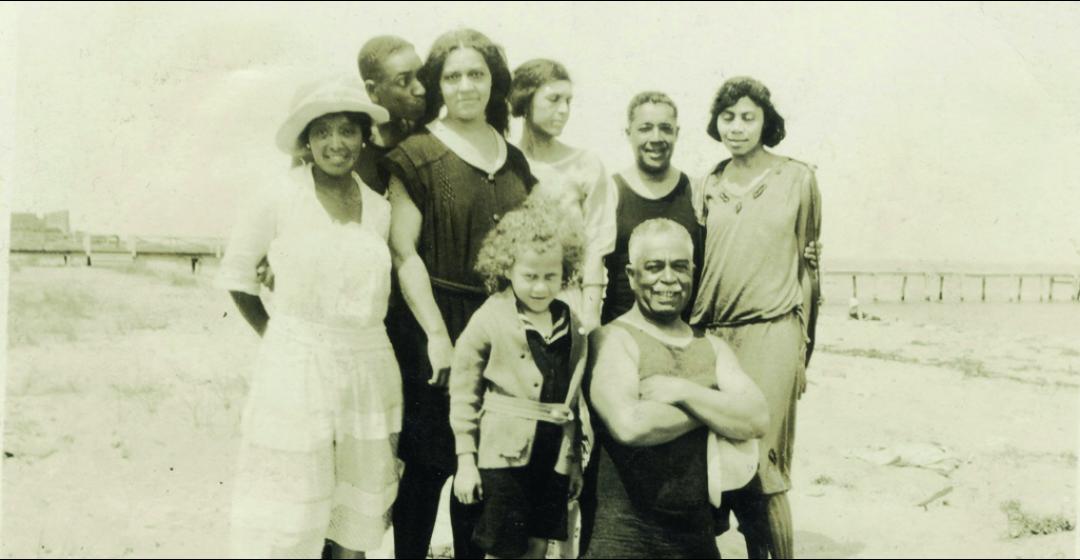Paris has the Louvre, London the British Museum. Washington has the Smithsonian, and now the Smithsonian has the Vineyard. That’s right, the Island will be featured in the new National Museum of African American History and Culture that will open in 2015 on the National Mall in Washington, D.C. Oak Bluffs will be one of just ten locales included in a section of the museum celebrating the “Power of Place.” In honor of that, and in association with the Smithsonian, this magazine is hosting a panel discussion with U.S. Representative Barbara Lee, the museum’s director, Dr. Lonnie Bunch, and a panel of longtime Oak Bluffs residents. The event is at four o’clock on Thursday, August 14 at Union Chapel in Oak Bluffs.
One of the goals of the Power of Place Gallery is to highlight and convey the diversity of the African American experience. But, according to Museum Curator Paul Gardullo, “importantly, it highlights that ‘place’ is not just about geography; it is about culture. Place is not just a physical or geographic location in the world, but is where culture is made, where memories and histories are kept and/or lost, where identities are created and recreated.”
With a definition like that, it’s not surprising that Oak Bluffs was considered for inclusion. Still, the selection process was not a quick one. Some of the other locations and themes that made the cut are: Black Metropolis: The Chicago Defender and the Making of Chicago, Illinois; Angola: The Louisiana State Penitentiary, A Story of the Plantation Prison System in the Deep South; Deep Roots: A Story of Rice Fields in the Low Country of South Carolina; Black Routes West: Untold Stories of the Black Presence in the Old West; and Black Wall Street: A Story of Riot, Rebirth, and Resilience in Tulsa, Oklahoma.
That’s big league company, but Oak Bluffs, with its long history, emerged as a natural to join the grouping. As Gardullo puts it, “it rises to the top of lists. It also provides us with an opportunity to highlight the story of black leisure during the era of segregation, the need to find places of respite – of one’s own – that will surprise some people. It also allows us to get at some questions of why Oak Bluffs remains popular in the twenty-first century.”
With the decision made, Project Historian Kevin Strait came to the Island several years back on a collecting mission. He returned to the museum with a wealth of information and artifacts from the Shearer Cottage and Adam Clayton Powell Jr.’s “Bunny” Cottage. He also unearthed such treasures as historic guest books and wicker chairs from front porches. There were photographs from Liz White’s Shearer Summer Theater, and the promise of a complete set run of Mel Patrick’s Delegate, a highly sought-after annual publication from the 1960s through the 1980s that featured an illustrated section on Oak Bluffs summer doings. Vintage family photographs and home movies rounded out the collection, along with smaller, quirkier items – a cast iron lawn mower, some old kerosene lamps – designed to give a sense of what Island life was like back in the day.
The quest goes on. “We are always on the lookout for material and are happy to learn about collections, especially photographic or film collections,” says Gardullo. “We will be developing a short film piece for the case study tentatively entitled ‘Who Is a Vineyarder?’ that gets at questions of identity and belonging and allows for our visitors on the [National] Mall to hear from a selection of Oak Bluffs residents and visitors talking about their place and what made and still makes it special.”
We know what makes it special, and whether Vineyarders, Islanders, or day trippers from America, we’ll be able to hear more about the film, meet curators from the museum, and perhaps even add to the discussion on August 14 at Union Chapel in – where else – Oak Bluffs.





